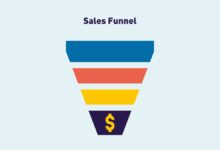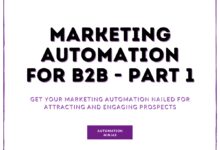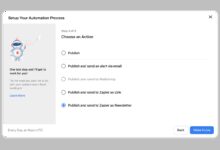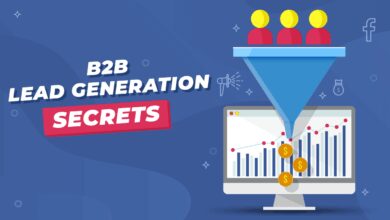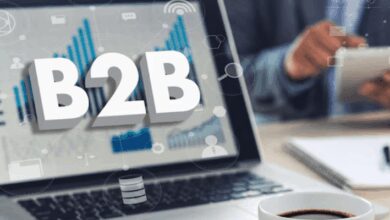B2B Digital Marketing: 7 Proven Strategies to Dominate Your Niche
In today’s hyper-connected world, mastering b2b digital marketing is no longer optional—it’s essential. Whether you’re a startup or an enterprise, leveraging digital channels strategically can skyrocket your lead generation, boost brand authority, and drive sustainable revenue growth.
Understanding the Fundamentals of B2B Digital Marketing

B2B digital marketing refers to the strategies and tactics businesses use to promote their products or services to other businesses through online channels. Unlike B2C marketing, which often appeals to emotions and impulse decisions, b2b digital marketing focuses on logic, ROI, and long-term value. It’s a more complex, relationship-driven process that involves multiple stakeholders and longer sales cycles.
What Sets B2B Apart from B2C Marketing?
The core difference lies in the audience and decision-making process. In B2B, purchases are made by teams, not individuals, and are based on thorough research, budget considerations, and strategic alignment. This means your marketing must be more informative, data-driven, and tailored to specific roles within an organization.
- B2B decisions involve multiple stakeholders (e.g., procurement, finance, technical teams).
- Sales cycles are longer, often spanning weeks or months.
- Content must address pain points, industry challenges, and measurable outcomes.
“In B2B, you’re not selling a product—you’re solving a business problem.” — HubSpot
Key Objectives of B2B Digital Marketing
The primary goals of b2b digital marketing go beyond just generating leads. They include building brand credibility, nurturing long-term relationships, and positioning your company as a thought leader in your industry. Success is measured not just by conversions, but by customer lifetime value and retention rates.
- Generate high-quality, qualified leads.
- Establish brand authority and trust.
- Support the sales team with marketing-qualified leads (MQLs).
- Drive customer retention and upsell opportunities.
The Role of Content in B2B Digital Marketing
Content is the backbone of any successful b2b digital marketing strategy. It educates, informs, and guides potential buyers through the complex decision-making journey. From blog posts to whitepapers, the right content builds trust and positions your brand as a reliable partner.
Types of High-Performing B2B Content
Not all content is created equal. In the B2B space, certain formats consistently outperform others due to their depth, credibility, and utility. These include:
- Whitepapers and E-books: In-depth reports that provide solutions to industry-specific challenges. They’re excellent for lead generation when gated behind a form.
- Case Studies: Real-world examples of how your product or service solved a client’s problem. They build social proof and reduce perceived risk.
- Webinars: Interactive sessions that allow for real-time engagement, Q&A, and lead qualification.
- Blog Posts: Regularly updated articles that improve SEO and keep your audience informed.
According to Content Marketing Institute, 91% of B2B marketers use content marketing to reach customers, with 70% saying it’s more effective than traditional advertising.
Content Personalization and Account-Based Marketing
One-size-fits-all content no longer works in b2b digital marketing. With the rise of account-based marketing (ABM), personalization has become critical. This means creating tailored content for specific accounts or buyer personas, such as customized landing pages, targeted emails, and personalized video messages.
- Use CRM and marketing automation tools to segment audiences.
- Map content to each stage of the buyer’s journey (awareness, consideration, decision).
- Leverage intent data to deliver relevant content at the right time.
“Personalized content can increase conversion rates by up to 202%.” — Aberdeen Group
Leveraging SEO for B2B Digital Marketing Success
Search engine optimization (SEO) is a cornerstone of b2b digital marketing. When done correctly, it ensures your content is visible to decision-makers actively searching for solutions. Unlike B2C SEO, which often targets broad keywords, B2B SEO focuses on long-tail, industry-specific terms with high commercial intent.
Keyword Research for B2B Audiences
Effective keyword research starts with understanding the language your buyers use. Tools like Ahrefs and Moz can help identify high-value keywords such as “best CRM for enterprise sales teams” or “cloud-based ERP solutions for manufacturers.”
- Focus on informational and commercial intent keywords.
- Target niche industry terms that competitors may overlook.
- Optimize for voice search and question-based queries (e.g., “how to reduce supply chain costs”).
On-Page and Technical SEO Best Practices
On-page SEO ensures your content is structured for both users and search engines. This includes optimizing title tags, meta descriptions, header tags (H1, H2, H3), and image alt text. Technical SEO, on the other hand, deals with site speed, mobile responsiveness, and crawlability.
- Use schema markup to enhance rich snippets (e.g., for case studies or events).
- Ensure fast page load times—Google prioritizes sites under 3 seconds.
- Fix broken links and implement proper 301 redirects.
A study by Backlinko found that the top-ranking pages on Google have an average word count of 1,447, proving that comprehensive, in-depth content ranks better.
Social Media and LinkedIn in B2B Digital Marketing
While social media is often associated with B2C brands, it plays a crucial role in b2b digital marketing—especially LinkedIn. As the world’s largest professional network, LinkedIn offers unparalleled access to decision-makers, influencers, and industry leaders.
Why LinkedIn Dominates B2B Marketing
LinkedIn is the go-to platform for B2B marketers because it allows for precise targeting based on job title, industry, company size, and seniority. According to LinkedIn Marketing Solutions, 80% of B2B leads come from LinkedIn, making it the most effective social platform for lead generation.
- Use LinkedIn Ads to target specific decision-makers.
- Publish long-form articles on LinkedIn Pulse to showcase expertise.
- Engage in industry groups and discussions to build credibility.
Other Social Platforms Worth Considering
While LinkedIn is the leader, other platforms can complement your b2b digital marketing strategy:
- Twitter (X): Great for real-time engagement, sharing industry news, and participating in Twitter chats.
- YouTube: Ideal for product demos, explainer videos, and customer testimonials.
- Facebook: Useful for employer branding and community building, though less effective for direct lead gen.
“Companies that use video in their B2B marketing grow revenue 49% faster than those who don’t.” — Vidyard
Email Marketing in the B2B Landscape
Email remains one of the most effective channels in b2b digital marketing. With an average ROI of $36 for every $1 spent, it’s a high-impact tool for nurturing leads, delivering personalized content, and driving conversions.
Building a High-Quality B2B Email List
The foundation of successful email marketing is a clean, permission-based list. Avoid purchasing lists, as they lead to high bounce rates and spam complaints. Instead, focus on organic list growth through lead magnets like whitepapers, webinars, and free trials.
- Use double opt-in to ensure list quality.
- Segment your list by industry, role, or behavior.
- Regularly clean your list to remove inactive subscribers.
Creating Effective B2B Email Campaigns
B2B emails should be concise, value-driven, and action-oriented. Avoid overly promotional language and focus on solving the recipient’s problem. Use personalization tokens (e.g., first name, company) to increase relevance.
- Write compelling subject lines that spark curiosity (e.g., “3 Ways to Cut IT Costs by 30%”).
- Include clear CTAs like “Download the Guide” or “Schedule a Demo.”
- Automate drip campaigns for lead nurturing based on user behavior.
Tools like Mailchimp and HubSpot offer robust automation features that integrate with CRM systems for seamless lead tracking.
Account-Based Marketing (ABM) and B2B Digital Marketing
Account-based marketing (ABM) is a strategic approach where marketing and sales teams collaborate to target high-value accounts with personalized campaigns. It’s a shift from the traditional “spray and pray” model to a more focused, one-to-one strategy.
How ABM Enhances B2B Digital Marketing
ABM aligns marketing efforts with sales goals by focusing on quality over quantity. Instead of generating thousands of leads, you target a few key accounts with tailored messaging across multiple channels—email, social, display ads, and direct mail.
- Increases alignment between sales and marketing teams.
- Improves conversion rates by delivering hyper-relevant content.
- Shortens sales cycles by engaging decision-makers early.
A report by ABM Institute found that 87% of companies practicing ABM report higher ROI than with other marketing strategies.
Implementing an ABM Strategy
Launching an ABM campaign involves several key steps:
- Identify target accounts: Use firmographic data (industry, revenue, location) and intent signals to select high-potential accounts.
- Create personalized content: Develop custom landing pages, emails, and ads for each account.
- Engage across channels: Coordinate outreach via LinkedIn, email, and paid ads.
- Measure and optimize: Track engagement metrics like email opens, website visits, and meeting bookings.
“ABM isn’t a tactic—it’s a philosophy of customer-centric marketing.” — ITSMA
Measuring Success: KPIs and Analytics in B2B Digital Marketing
You can’t improve what you don’t measure. In b2b digital marketing, tracking the right key performance indicators (KPIs) is essential for evaluating campaign effectiveness and optimizing future efforts.
Essential B2B Marketing KPIs
Different stages of the funnel require different metrics. Here are the most important KPIs to monitor:
- Lead Conversion Rate: Percentage of visitors who become leads.
- Marketing Qualified Leads (MQLs): Leads deemed ready for sales follow-up.
- Sales Qualified Leads (SQLs): Leads accepted by the sales team.
- Customer Acquisition Cost (CAC): Total marketing and sales cost to acquire a customer.
- Return on Ad Spend (ROAS): Revenue generated per dollar spent on advertising.
- Website Traffic Sources: Understand which channels drive the most qualified traffic.
Tools for Tracking and Reporting
Leverage analytics platforms to gain insights into user behavior and campaign performance:
- Google Analytics: Track traffic, bounce rates, and conversion paths.
- HubSpot or Marketo: Monitor lead lifecycle and nurture campaign performance.
- LinkedIn Analytics: Measure engagement and lead gen from social campaigns.
- CRM Integration: Sync data from Salesforce or Microsoft Dynamics for a unified view of the customer journey.
According to Gartner, 75% of high-performing marketing organizations use advanced analytics to guide decision-making.
Emerging Trends Shaping the Future of B2B Digital Marketing
The b2b digital marketing landscape is evolving rapidly. Staying ahead requires embracing new technologies, shifting buyer behaviors, and innovative strategies.
The Rise of AI and Automation
Artificial intelligence is transforming how B2B marketers personalize content, predict buyer intent, and automate workflows. AI-powered tools can analyze vast amounts of data to identify high-intent leads, optimize ad spend, and even generate content.
- Chatbots for instant lead qualification.
- Predictive analytics for lead scoring.
- AI-driven content creation and optimization.
Companies like Salesforce Einstein are already integrating AI into CRM platforms to enhance customer insights.
Video and Interactive Content
Video is no longer optional. From product demos to virtual events, video content increases engagement and helps explain complex solutions. Interactive content like quizzes, calculators, and configurators also boosts user engagement and time on site.
- Use explainer videos on landing pages to improve conversion rates.
- Host virtual product tours or live Q&A sessions.
- Create interactive ROI calculators to demonstrate value.
“Videos can increase organic traffic from SEO by 157%.” — Insivia
Privacy-First Marketing and Consent Management
With increasing regulations like GDPR and CCPA, b2b digital marketing must prioritize data privacy. This means obtaining explicit consent, being transparent about data usage, and investing in compliant marketing technologies.
- Implement consent management platforms (CMPs).
- Audit third-party data sources for compliance.
- Focus on first-party data collection through gated content and lead forms.
What is B2B digital marketing?
B2B digital marketing refers to the use of online channels—such as websites, search engines, social media, email, and content platforms—to promote products or services from one business to another. It focuses on building relationships, generating qualified leads, and supporting long sales cycles with data-driven, educational content.
How is B2B digital marketing different from B2C?
B2B marketing targets businesses and involves multiple decision-makers, longer sales cycles, and a focus on ROI and efficiency. B2C marketing, on the other hand, targets individual consumers, often relying on emotional appeal and faster purchase decisions. B2B content is typically more technical and educational.
Which platforms are most effective for B2B digital marketing?
LinkedIn is the most effective social platform for B2B marketing, followed by YouTube for video content and Twitter for real-time engagement. Email, SEO, and content marketing remain foundational, while emerging channels like podcasting and virtual events are gaining traction.
What role does content play in B2B digital marketing?
Content is central to B2B digital marketing. It educates buyers, builds trust, and guides them through the decision-making process. High-performing content includes whitepapers, case studies, webinars, and blog posts that address specific pain points and industry challenges.
How do you measure the success of a B2B digital marketing campaign?
Success is measured using KPIs such as lead conversion rate, marketing-qualified leads (MQLs), customer acquisition cost (CAC), and return on ad spend (ROAS). Analytics tools like Google Analytics, HubSpot, and CRM systems help track performance across the buyer’s journey.
B2B digital marketing is a dynamic, multi-channel discipline that requires strategy, precision, and continuous optimization. From content and SEO to ABM and AI, the most successful campaigns combine data-driven insights with human-centric messaging. By understanding your audience, leveraging the right tools, and staying ahead of trends, you can build a powerful digital presence that drives real business results. The future of B2B marketing isn’t just digital—it’s intelligent, personalized, and customer-first.
Further Reading:

